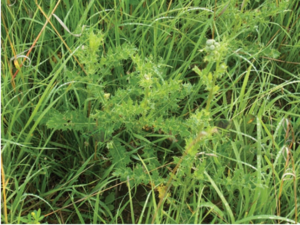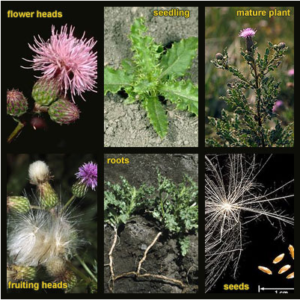
When it comes to weeds, not all things are equal. A “weed” is characterized as an unwanted pest in an undesirable location. Although these plants often annoy or inconvenience us, there are certain ones that can be very harmful. These are our noxious weeds. These little bundles of joy come packed with sharp prickles, toxic leaves, aggressive growth, and the ability to survive. When given the opportunity they can negatively impact the value of a crop or even the health of animals. In Oregon, “Noxious” weeds are defined as: “a terrestrial, aquatic or marine plant designated by the State Weed Board under ORS 569.615 as among those representing the greatest public menace and as a top priority for action by weed control programs.” These are no doubt a serious problem, not just a nuisance, so it is important to learn how to identify these plants.

Once you can identify what species you have, then you can look into control methods which may include herbicides, mowing, tillage or even cover cropping. Once controlled it is important to reseed the bare or weak areas to promote suppression through competition. Since not every plant reacts the same way there often is no “silver bullet” or blanket treatment. For example, Canadian thistle has a root system that, when cut, can develop into new plants. No, this isn’t something from Greek mythology. It is very real, so tillage may not be the answer, and in some cases, it can make matters worse. We urge you to get outside, take a look around, and get the upper hand on these weeds. Don’t let them be more noxious than they already are.
Finally, we must work on controlling these weeds! Don’t be afraid to reach out to experts in your area for help. When it comes to taking on these noxious nightmares it is important to develop a plan, execute that plan, and FOLLOW UP. It may take several management practices to eliminate noxious weeds.


